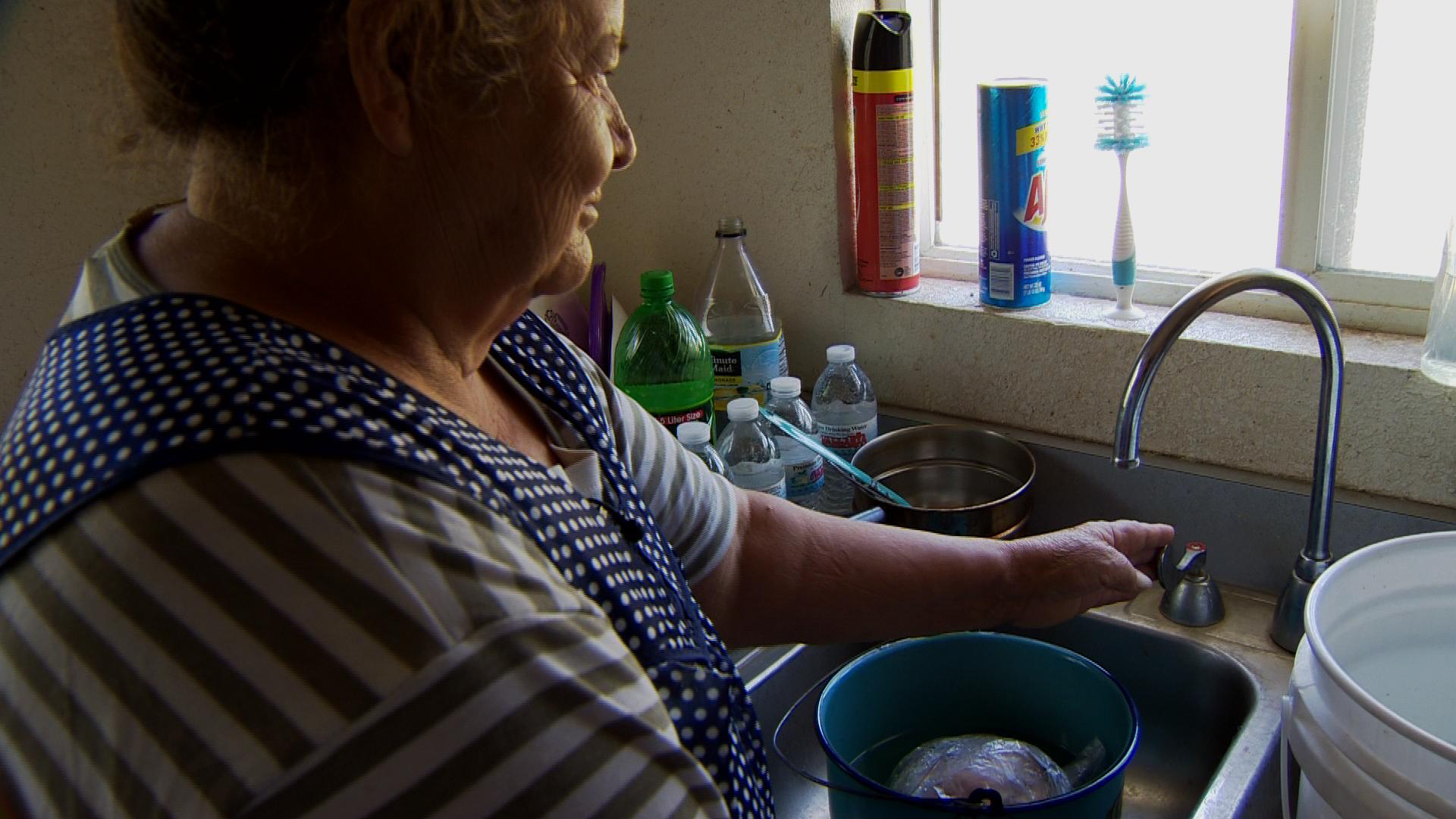California's water woes quantified
- Published
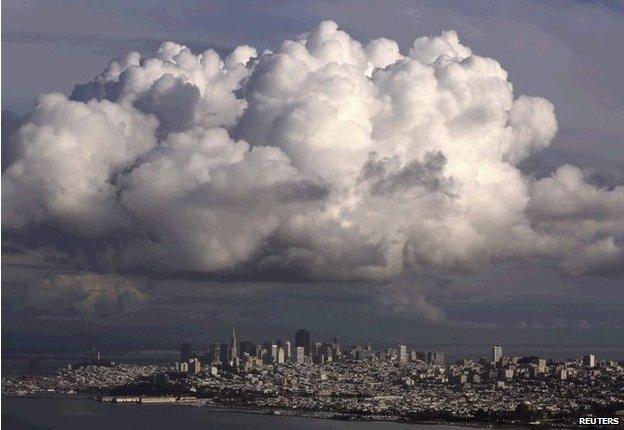
Big clouds have been rolling in off the Pacific, bringing heavy rains
Scientists have assessed the scale of the epic California drought and say it will require more than 40 cubic km of water to return the US state to normal.
The figure was worked out by weighing the land from space.
The American West Coast has been hit by big storms in recent days, but this rainfall is only expected to make a small dent in California's problems.
Researchers described their research at the American Geophysical Union's Fall Meeting in San Francisco.
The US space agency (Nasa) used its Gravity Recovery and Climate Experiment (Grace) satellites in orbit to help make the calculations.
Jay Famiglietti: "Water levels are at all-time lows right around the State"
These spacecraft measure the very subtle variations in Earth's gravity as they fly around the globe.
This shifting tug results from changes in mass, and this is influenced by the rise and fall in the volume of water held in the land.
Figures quoted by Nasa on Tuesday are for California's Sacramento and San Joaquin river basins - the state's "water workhorses".
Unsustainable practice
Grace data indicates total water storage in these basins - that is all snow, surface water, soil moisture and ground water combined - has plummeted by roughly 15 cubic km a year.
This number is not far short of all the water that runs through the great Colorado River (nearly 20 cubic km), which is one of the primary sources for import into the state.
Jay Famiglietti from Nasa's Jet Propulsion Laboratory (JPL) in Pasadena, California said: "We've shown that it's now possible to explicitly quantify previously elusive drought indictors like the beginning of the drought or the end of the drought, and importantly the severity of the drought in any point in time.
"That is, we can now begin to answer the question: how much water will it take to end the drought?
"We show for the current drought this quantity peaked in 2014 at 42 cubic km of water. That's 11 trillion gallons, or about one-and-a-half times the volume of Lake Mead.
"So, no - the recent rains have not put an end to the current drought at all, but they are certainly welcome."
Rather worryingly, a lot of the deficit - two-thirds - is accounted for by reductions in ground water, which constitutes an unsustainable level of extraction.
"Ground water is a strategic reserve in times of drought and we need to be very careful how we manage it," Dr Famiglietti told BBC News.
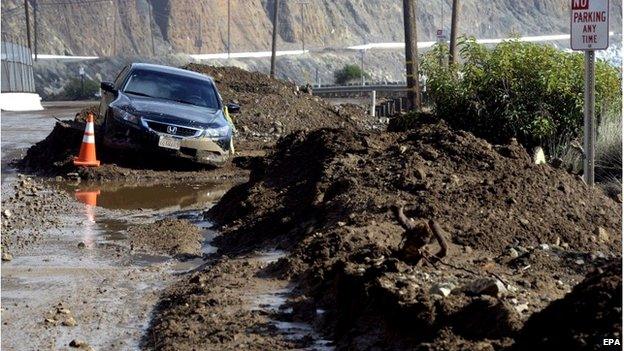
A lot more rain will be needed to dent California's problems
Snow decline
New aeroplane surveys of the snow fields in the mountains that supply California with much of its water tell a similar story.
The Airborne Snow Observatory, as it is known, shows the size of these fields has probably been overstated by 100%.
In other words, the state probably has even less water in reserve than it thought.
"The 2014 California snowpack was the worst on recorded. It [battled] it out with 1977 through the year, but finally won out. But in 1977, we had half the population that we have today," commented Airborne Snow Observatory Principal Investigator Tom Painter of JPL.
"Besides resulting in less snow water, the dramatic reduction in snow extent contributes to warming our climate by allowing the ground to absorb more sunlight. This reduces soil moisture, which makes it harder to get water from the snow into reservoirs once it does start snowing again."
None of this will cheer the state's 38 million residents, many of whom have been flooded out this week by big Pacific storms.
The National Weather Service says much more rain will be needed to end the drought.
Jonathan.Amos-INTERNET@bbc.co.uk and follow me on Twitter: @BBCAmos, external
- Published11 December 2014

- Published14 December 2014
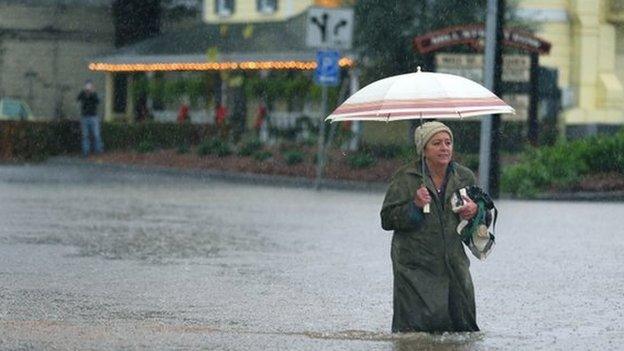
- Published16 November 2014
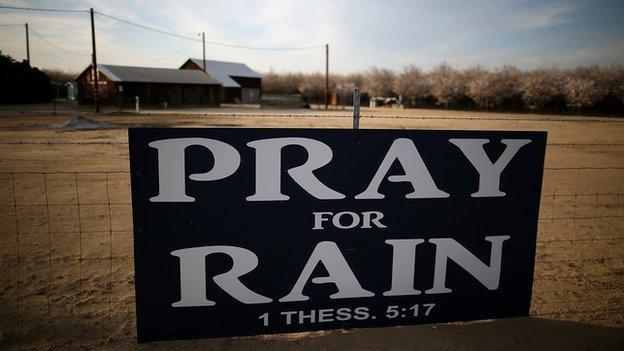
- Published27 August 2014
